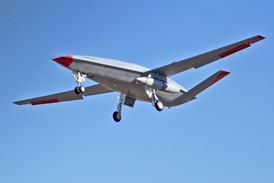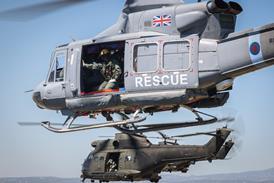Paul Phelan/CANBERRA
BOEING'S FANS 1 (future air-navigation system) package for the Boeing 747-400 is on track for US certification in mid-June, with pre-implementation trials and demonstrations to begin on 22 June.
Full FANS implementation, for qualified aircraft and carriers on selected Pacific routes, is now planned for December. A second series of demonstration flights will take place in August, to include Qantas, United Airlines, Air New Zealand and French Polynesian aircraft as part of an implementation schedule just developed by the Informal South Pacific Air Traffic Services Coordinating Group (ISPACG).
The ISPACG-8 conference was given dates on which all participating airlines, civil-aviation authorities and other service providers expected to be ready for full FANS 1 activation. Qantas will have three aircraft prepared by mid-July.
"We've deferred everything on the basis of not spending any money until we can use the system. We'll have six aircraft fitted by 15 October, which is enough to operate the Pacific routes," says the company's 747-400 fleet technical manager, Capt. David Massy-Greene.
Air New Zealand expects to be prepared for initial operation on 31 July. United Airlines is planning on readiness in mid-August, when certification of the Pratt & Whitney-powered aircraft is expected. Most carriers indicate a need for three months' lead-time for pilot training, involving changed procedures, pilot applications of FANS 1 technology, and piloting aspects of reduced separation standards.
By mid-July, communications-service providers ARINC and SITA expect to have ready the interface between their networks - essential to the operation because ARINC customers such as United will sometimes rely on SITA for communications transfer as well as for automatic dependent surveillance (ADS) transmissions.
Air-traffic service providers will be responsible for two capabilities: controller-pilot datalink communications (CPDLC), and ADS. New Zealand, which already has a CPDLC capability, will be ready on 10 July; Australia will be operationally ready on 14 September; the USA on 15 September; French Polynesia on 1 December; and Fiji on 1 January 1996.
ISPACG 8, examined possible FANS implementation in advance of Fiji's participation, if necessary, by having the Dynamic Air Reroute Planning (DARP) tracks enter and exit Fiji's airspace, at fixed points. Fiji, however, is known to be discussing ground-based equipment with ADACEL, the company producing Australia's CPDLC equipment, and is believed to be dealing also with New Zealand's supplier CAE.
ATS providers expect to develop in-trail and lateral separations of 55km (30nm) by the end of 1996, for which ADS-position updates and CPDLC contact will be required at intervals of no more than 15min. A reduced vertical separation programme, which is also part of the ISPACG strategy, is expected to be developed by about December 1997, following further trials, particularly in crossing- track situations.
ISPACG has noted International Federation of Airline Pilot Associations (IFALPA) concerns over reduced separation, says Australian ISPACG coordinator Brian Kendel, and is to meet its president to try to resolve the matter, and clear the way for the implementation of safety and efficiency initiatives.
The ISPACG has also discussed the potential problems and efficiency reductions of mixing FANS and non-FANS aircraft. Kendel says: "We'll have to measure the impact, and see whether the priority system currently in place should remain the same. So far, we've only done desktop simulations, and we've no conclusive evidence that it's a big issue, but it may develop as one in the future."
International interest in the project is quickening. Representatives from Japan, Indonesia, France and Singapore attended ISPACG 8, and other Asian states are following developments closely, says Kendel.
Source: Flight International
















